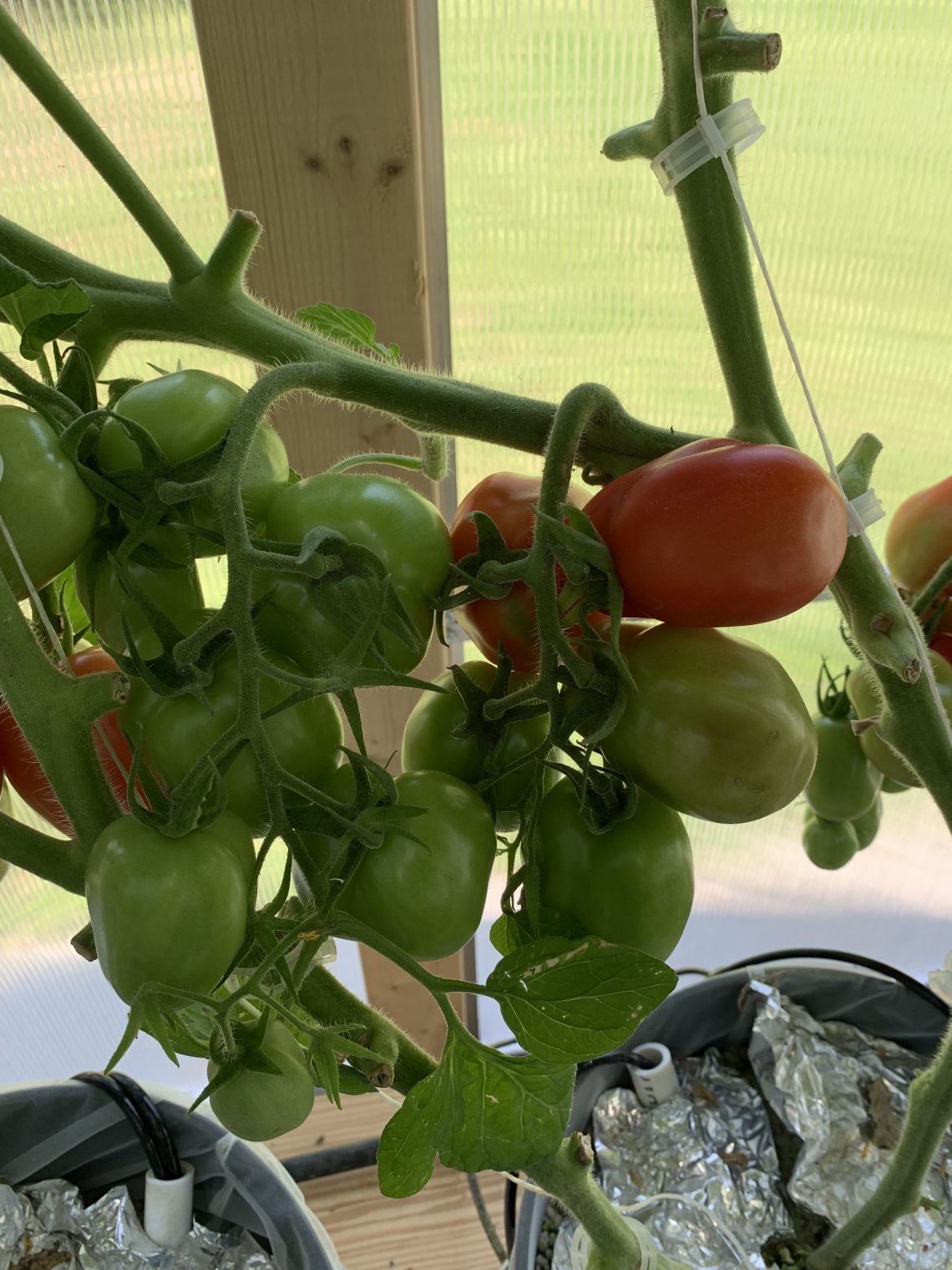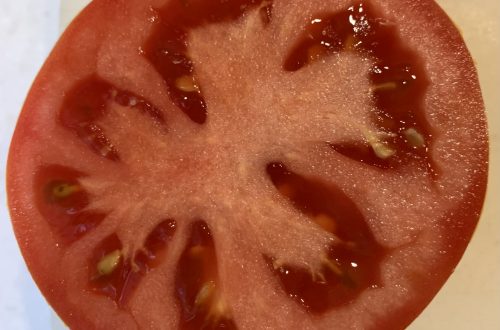
Roma Tomatoes
Roma tomatoes, also known as Italian plum tomatoes, are a popular type of tomato known for their elongated shape and firm, meaty flesh. Here’s some information about Roma tomatoes:
Appearance: Roma tomatoes are smaller than regular round tomatoes and typically have an oblong or cylindrical shape. They have a bright red or reddish-orange skin and are usually smooth and shiny in texture.
Taste and Texture: Roma tomatoes have a dense and meaty texture, making them ideal for sauces, salsas, and canning. They have a rich, slightly sweet flavor with low acidity, which makes them well-suited for cooking and blending into recipes.
Uses: Due to their meaty texture and low moisture content, Roma tomatoes are commonly used in Italian and Mediterranean cuisines. They are often used in making sauces, purees, and pastes, as well as in salads, stews, and soups. Roma tomatoes are also a popular choice for sun-drying.
Nutritional Value: Roma tomatoes are low in calories and are a good source of vitamins A and C, potassium, and fiber. They also contain antioxidants such as lycopene, which has been associated with various health benefits.
Selection and Storage: When choosing Roma tomatoes, look for ones that are firm and free of bruises or blemishes. They should have a deep red color and feel heavy for their size. Store them at room temperature until they ripen, and then you can refrigerate them to extend their shelf life for a few more days.
Roma tomatoes are a versatile ingredient in many dishes and are especially valued for their robust flavor and thick flesh
- Roma tomatoes grow very well in the “Dutch Bucket” system. You will want your nutrients EC level to be between 2.0-5.0 and a pH between 5.5-6.5. Tomatoes are heavy feeders, and will use more water than nutrients. So I find starting my new reservoir on the lower side of the above levels. That way as the water gets used by the plant there is safe zone for the EC and pH levels to rise.
- Pruning: Roma tomatoes generally don’t require extensive pruning. However, you can remove any suckers (side shoots that emerge between the main stem and branches) to encourage better air circulation and focus the plant’s energy on fruit production. While not required I also prune lower leaves and thin out leaves as the plant grows.
- Pest and disease control: Monitor your plants regularly for common tomato pests such as aphids, tomato hornworms, or whiteflies. If necessary, use organic pest control methods or consult with a local garden center for appropriate treatments. Be vigilant for signs of diseases like blight or wilt and take prompt action if you notice any symptoms.
- Harvesting: Roma tomatoes are usually ready for harvest around 70-80 days after transplanting. They should be firm, fully colored, and slightly soft to the touch. Harvest them by gently twisting or cutting the stem above the fruit.
Height Range: 3-4’
Vine Type: Determinate
By following these guidelines and providing proper care, you should be able to enjoy a bountiful harvest of delicious Roma tomatoes. Happy gardening!


